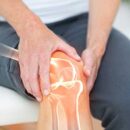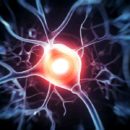Carpel Tunnel Syndrome

CTS is a relatively common problem with symptoms of pain, numbness, tingling/pins & needles in the hand, commonly (but not exclusively) at night, often temporarily relieved by shaking or ‘pumping’ the hand.
Sufferers can also experience weakness in the thumb and ache/pain in the arm. Symptoms are caused by compression of the median nerve which controls movement & feeling in the hand as it passes through a ‘tunnel’ formed by the small bones of the wrists and a ‘roof’ of fibrous tissue.
– genetic predisposition (family links)
– being pregnant (probably due to fluid retention; this often clears in the 3 months after the birth of the baby)
– direct trauma to the wrist (falls, repeated trauma)
– systemic conditions like rheumatoid arthritis or diabetes which cause swelling in the wrist or nerve damage respectively
– repetitive work with the hand e.g. typing, knitting, sewing & many other activities
However osteopaths have a model for ‘why the nerve becomes compressed’. We look at the function of the nerve from where it starts in the neck and all the points between there and the hand where the nerve could have its function compromised through muscular tension, poor joint mobility or compression, all of which could affect the quality and efficiency of circulation to & drainage from the nerve, leading to inefficiency in its conduction.
In our model, compression in the wrist in carpal tunnel is the ‘last straw’. So unlike medical treatments, which focus purely on the wrist (using splint, cortisone injection or surgery in extreme cases to release the ‘roof’ of the carpal tunnel to give the nerve more room), osteopaths look at how the wrist sits of the end of the arm and all the things that influence that, for example:-
– tension/restriction in the neck joints and surrounding muscles that relate to the nerve’s origin in the spine
– breathing mechanics, muscular tension, and history of shoulder trauma (since between the collarbone & the upper ribs is an important ‘junction box’ for the nerve as it passes from the neck through the shoulder & ribcage into the arm)
– tightness in the forearm muscles and the fibrous tissue between them (very common in anyone who types or uses a computer), since this can affect the efficiency of the low pressure drainage systems of the arm which runs between these tissues
– stiffness in the wrist bone (again common in typists, but also in anyone e.g. who uses tools which need to be grasped all the time)
– and many other factors individual to the person in terms of what has happened to their body, their posture, their job etc.
– and not forgetting that the neck sits on top of the rest of the spine, so it has to accommodate any problems below, and the position of the shoulder is dictated by the shape of the ribcage, which can be affected by breathing problems such as asthma- so sometimes relevant factors may also relate to other areas of the body.
So for me as an Osteopath, the symptoms in the hand in CTS are just the ‘tip of the iceberg’ – which is why my assessment will look at more than just the wrist, and my treatment is aimed at is making the whole iceberg smaller, not just the bit that pokes above the water!
Of course, Osteopathy is not the only medical approach that may help – stretching, changing activities or even diet may also influence how irritable the nerve is or the degree of fluid around it.. but an osteopath can certainly assess what physical restrictions may be contributing to the problem, and treat these as part of an approach to improving overall function & reducing symptoms.














